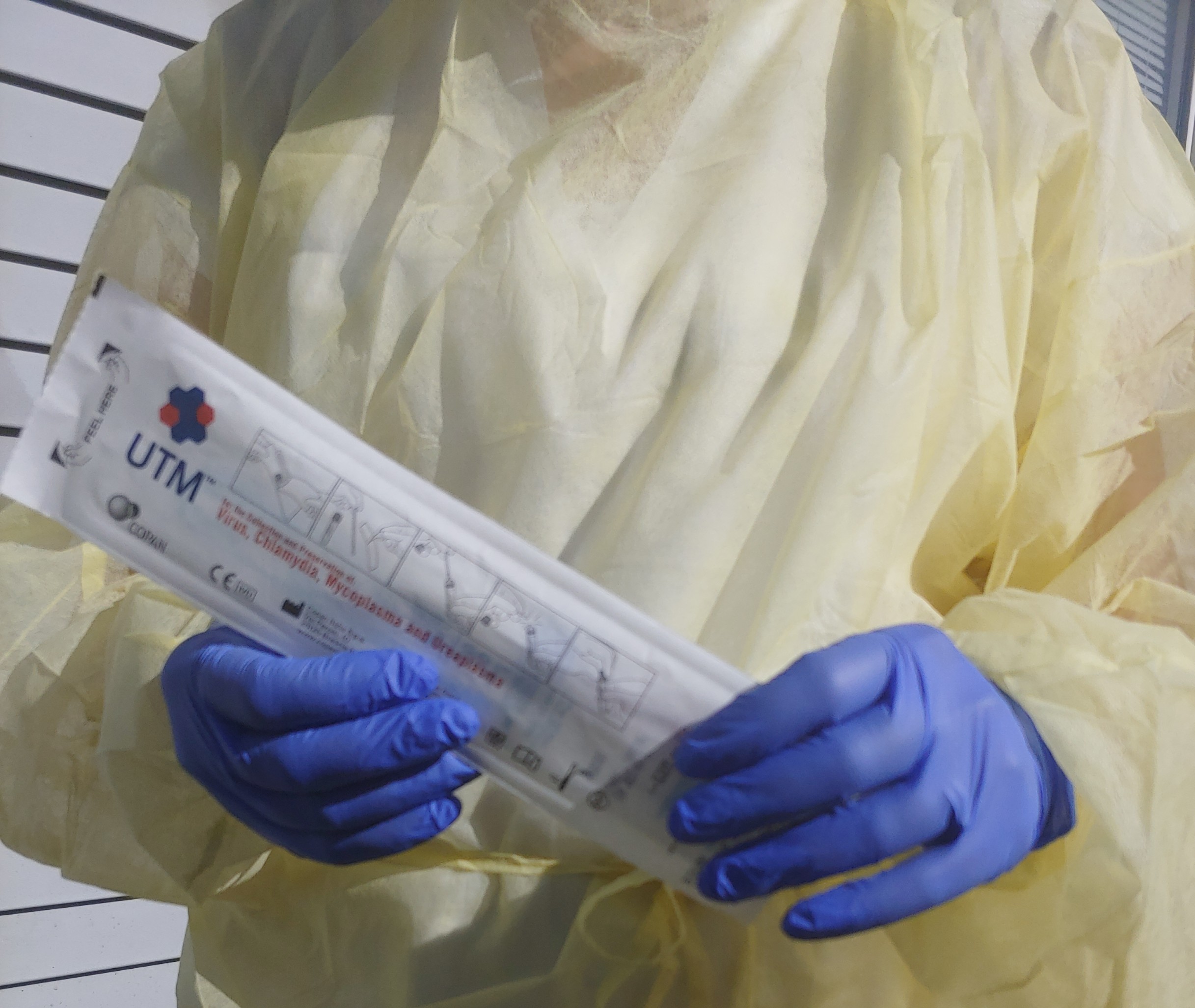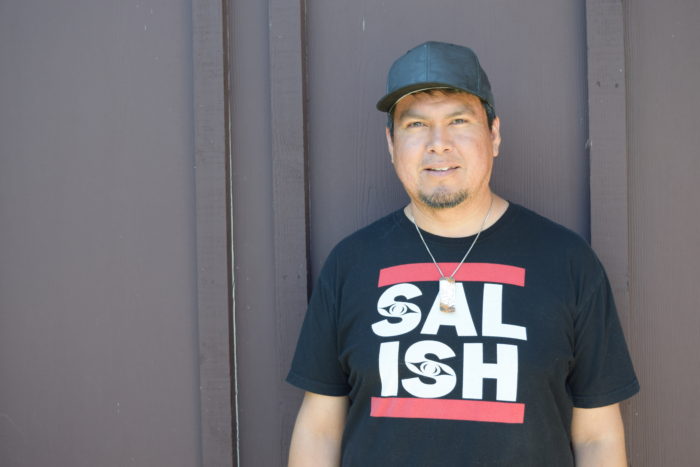COVID-19 Caution
Coast Salish artist lessLIE reflects on precaution and survival in the times of a pandemic
By lessLIE
I began to practice precaution around COVID-19 when I first heard about cases of the virus apparently starting in Wuhan, China. This was in December of 2019. In January of 2020, it began to spread into Europe, and it was warned it could become a global pandemic. Upon hearing of this possibility, I immediately went to a dollar store and bought a bottle of hand sanitizer.
I began to look at people with suspicion. Although it was improbable at the time, I imagined that a COVID-infected person could be walking among the customers at the dollar store, spreading the virus. I continued following the story as the pandemic began to spread into the United States, then into our neighboring Washington State. By February of 2020, I was already beginning to stock up on canned food, gardening supplies, a little bit of water (and, yes, even toilet paper). I have always believed in being prepared for a rainy day, and I have had more of a survivalist streak since becoming a father.
When the World Health Organization declared the global COVID-19 pandemic in March, I cried. I knew this would mean a large number of people would get sick, and many would die. I was worried that, if I didn’t take proper precautions, it could affect me, or my family members. In the past year, I had lost two parents and two grandparents and was already on edge.
With the pandemic, I feared the uncertainty of it all, and that stress is amplified for those of us who have already experienced trauma and loss. It became hard not to assume the worst, and staying calm in the face of such a virus — especially given the history of smallpox and other diseases in our communities — was difficult. But I had a dear five-year-old daughter to stay strong for. I have always considered myself to be a survivor.
When B.C. declared a state of emergency and began to shut a lot of society down, I began a post-pandemic routine. Once my significant other Amanda temporarily stopped working at the local reserve daycare, and my daughter stopped going there, my family’s safety became my priority. I was aware that humankind had not seen a pandemic like this since the Spanish Flu over a century ago. I knew I needed to do things every day to stay healthy and to keep a sense of normalcy and control. My routine consisted of exercise every day, tending to the fruit and berry trees growing behind our house, changing my diet, meditating in nature while getting vitamin D, staying at home, and only going out for essential grocery shopping. I kept creating artwork to maintain my sanity, and watched survivalist videos on YouTube. We washed our hands, practiced social distancing, and we sanitized our groceries and anything else that came into our house. Upon getting home from supply runs, we would shower and change our clothes.
After a while, things were beginning to look optimistic for me and my family. We survived through three months of this pandemic with these routines. British Columbia began to flatten the curve, and we moved into Phase Three of our pandemic response. I felt we were seeing light at the end of the tunnel.
Then, one evening, I began to have a headache. The following morning, on my daily jog, I felt a body ache go through my back. I felt pain and exhaustion through my body, which I knew was a COVID-19 symptom. But I went to sleep that night hoping I would sleep off whatever I was going through physically.
Still, the following morning, I continued to have the same symptoms. Since my significant other works in a daycare and had gone back to work, the protocol was for us to notify the daycare and for me to arrange to be tested. I wanted to do what was best for my family and reserve community. So I began to self-isolate that evening. On that first evening of my quarantine, my significant other notified me via text message that the daycare was going to be shut down as a precaution. Upon hearing this, the reality of my situation began to hit me. I felt the weight of it coming down upon me. How was it that I, someone who has been so careful, was now finding myself in this situation?

The evening before I began my self-isolation, my daughter and I spent some time in the backyard together. She ate sunflower seeds and I sat in the yard with her. I got up and ate a cherry from a tree I had been caring for in our yard. She wanted one, but the only one I could find was decaying.
As I sat in my room that evening in self-quarantine, I began to fear the worst. Although COVID-19 has a high recovery rate, not everyone survives it. I started to worry that these would be my final memories with my dear daughter. I also began to fear that my final memories with my significant other Amanda would be ones about disagreeing about social distancing. I wondered how, after all my efforts, could I have possibly contracted the virus? I stayed home, only went out in essential grocery trips, washed my hands thoroughly often, practiced social distancing, and educated myself about the subject. Yet I always feared that COVID-19 could touch any one of us, even the most vigilant.
Awaiting the test results was scary. Like anybody else, I don’t want to find myself dying alone in a hospital. As I waited, I thought about my ancestors, who were so strong despite all the suffering and death that surrounded them. I felt a deep sadness at the parallel I was now experiencing — but grateful for the resiliency of my people.
When my test results thankfully came back negative, I took a deep sigh of relief. I was grateful, but my feelings of uncertainty and stress remained. I wondered how it must feel for those who have received positive test results. I thought about all the ways that life has changed since the global pandemic was declared and how much we have to lose. Not letting the panic and stress that can come with it overtake you is important — but at the same time, we must continue to take all possible precautions to protect ourselves, our families and our communities. Elders and people with compromised immune systems are particularly vulnerable, and they should be top of mind.
For me, I will remain optimistic. I will laugh and hope for my future, and the future of my five-year-old daughter, my family, my community, and my people.
lessLIE (Leslie Sam) is a Cowichan and Penelakut artist, writer and father. He resides at Snaw–naw-as First Nation with his family.




